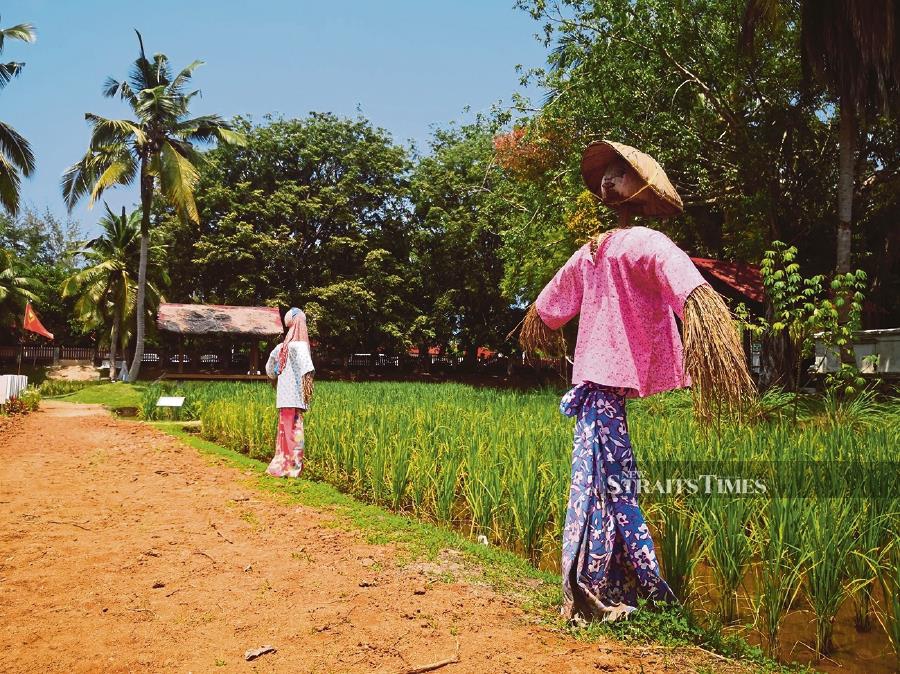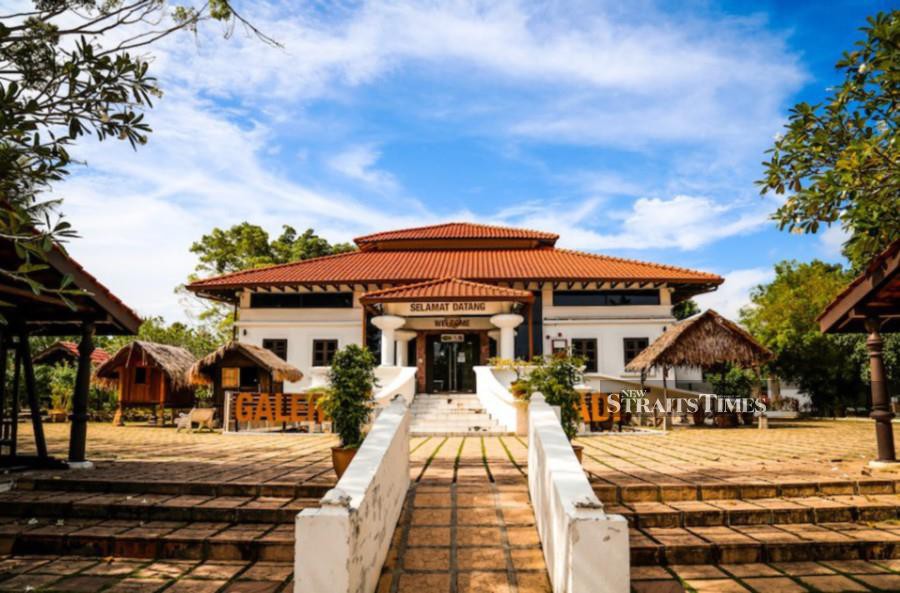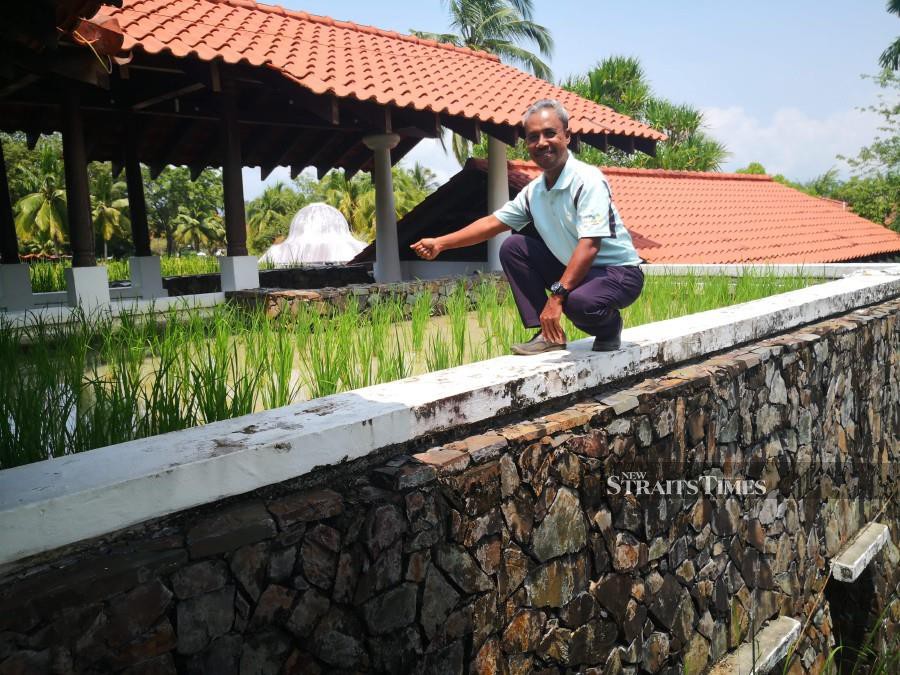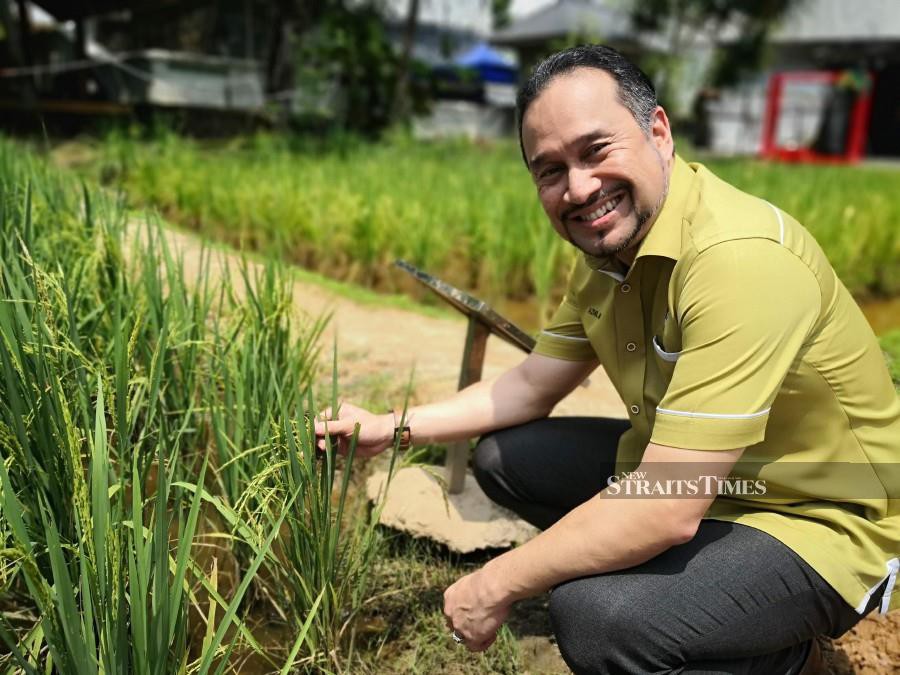RECENT reports regarding our nation's food security situation come to mind as soon as Laman Padi appears in the distance.
Although rice supply and prices have returned to normal, thanks to effective measures undertaken by the government agencies, concerns about history repeating itself in future still linger.
Located directly across the road from Pelangi Beach Resort and on the quieter side of touristy Pantai Cenang, this open-air repository, under the purview of the Langkawi Development Authority (LADA), is home to a treasure trove of exhibits and galleries highlighting rice cultivation history in Malaysia.
TRADITIONAL PLANTING
The best place to start is the indoor heritage museum that walks visitors through various traditional planting techniques. Complemented by scheduled guided tours and interactive activities, displays in this spacious air-conditioned area start by drawing stark comparison between modern planting strategies and hurdles faced by farmers in the past who had to formulate their guidelines based on observations and in-depth understanding of subtle environmental changes.
Tracing history all the way back to the early centuries AD when rice cultivation first took root in ancient Kedah's fertile Bujang Valley, available information then charts course a millennia forward to the period when the ability to control water supplies through canal constructions resulted in higher production.
As time passed, farmers learnt to accurately determine planting and harvesting periods through in-depth understanding of local rain and wind patterns. Hints on impending weather changes came in the form of unusual occurrences like chickens hopping in large numbers onto fences and hedges people sneezing continuously and fish jumping about frequently in ponds and canals.
Research, however, has proven that these olden-day guidelines are not mere traditional beliefs. Today, science clearly demonstrates that keen instincts make animals sensitive to even the slightest weather change while climatic variations commonly trigger physical reactions in the human body.
PRODUCTIVE FIELDS
Acquired information proves useful at the outdoor section, which comprises padi fields with shady coconut groves and traditional wooden shelters. It is easy to identify padi plants in different stages of growth while walking along the rice bunds complete with brightly dressed scarecrows moving in unison with the late morning breeze.
At the nurseries, green shoots start appearing from the mud three days after the seeds are sown. While waiting for seedlings to mature, farmers fill their days tilling and conditioning the fields before transplanting commences a month later.
The opportunity to know Laman Padi better comes in the form of a chance meeting with Dr Azmil Munif Mohd Bukhari. Gesturing towards the lush padi fields, the LADA tourism division manager explains that it has always been Laman Padi's objective to keep the fields productive for visitors to better understand Malaysia's most important agricultural segment.
"Annually, diligent Laman Padi staff members harvest significant amounts of rice destined for consumption here in Langkawi," said Dr Azmil Munif before pointing out that empty sections awaiting the next planting cycle may look idle but are actually contributing positively towards Langkawi's rich biodiversity.
"Together with mangrove swamps and mudflats located throughout our 99-island archipelago, these barren fields serve as important stopover spots for migratory birds escaping the harsh northern hemisphere winter. They rest and stock up on food in the form of insects and worms exposed by the fallowed ground before resuming flight southwards," he said while gesturing towards an information board identifying non-indigenous avian species commonly seen around Laman Padi.
With noon fast approaching, lunch comes in the form of a delightful spread of traditional delights at Laman Padi's Kerisik Restaurant. Interestingly, diners have the option of savouring selected set meals bearing the names of places in Langkawi like Tuba, Kedawang and Padang Lalang in traditional wooden shelters right by the padi fields.
LONG FORGOTTEN TECHNIQUE
A casual conversation with Rosdy Abd Hamid on the way out paves the way for the enthusiastic Laman Padi museum assistant to highlight a long forgotten padi planting idea that he feels might prove useful in alleviating future food security concerns.
While lauding recent calls from Deputy Prime Minister Datuk Seri Dr Ahmad Zahid Hamidi as well as Agriculture and Food Security Minister Datuk Seri Mohamad Sabu to boost rice supply by expanding cultivated fields in Sabah and Sarawak, Rosdy turns back the clock to the mid-1990s when then agriculture minister Datuk Seri Sanusi Junid suggested planting padi on roof-tops as a way to transform the industry.
While certain quarters at that time brushed aside the suggestion as outlandish and impractical, Rosdy, however, is of the opinion that the Kedah politician was a maverick and his far-sighted idea may perhaps be put to good use today.
"Although short-lived, the opportunity to realise the Japan-sourced idea came when he became the seventh Kedah menteri besar in 1996 and Muda Agricultural Development Authority chairman," Rosdy adds before expressing admiration for Sanusi's other out-of-the-box approaches such as the "drink coconut juice" campaign, which helped many local traders.
On the way out, thoughts reflect upon recent progresses made in the rice planting industry. Advancements in science and technology have resulted in a plethora of modern planting techniques, fast-growing new rice variants as well as potent fertilisers and effective chemicals to boost productivity. Together with successes in five harvests biennially, the future looks promising for this key agricultural segment.
Booking your trip to Langkawi is now hassle free with Klook promo code.








